-
 Bitcoin
Bitcoin $106,754.6083
1.33% -
 Ethereum
Ethereum $2,625.8249
3.80% -
 Tether USDt
Tether USDt $1.0001
-0.03% -
 XRP
XRP $2.1891
1.67% -
 BNB
BNB $654.5220
0.66% -
 Solana
Solana $156.9428
7.28% -
 USDC
USDC $0.9998
0.00% -
 Dogecoin
Dogecoin $0.1780
1.14% -
 TRON
TRON $0.2706
-0.16% -
 Cardano
Cardano $0.6470
2.77% -
 Hyperliquid
Hyperliquid $44.6467
10.24% -
 Sui
Sui $3.1128
3.86% -
 Bitcoin Cash
Bitcoin Cash $455.7646
3.00% -
 Chainlink
Chainlink $13.6858
4.08% -
 UNUS SED LEO
UNUS SED LEO $9.2682
0.21% -
 Avalanche
Avalanche $19.7433
3.79% -
 Stellar
Stellar $0.2616
1.64% -
 Toncoin
Toncoin $3.0222
2.19% -
 Shiba Inu
Shiba Inu $0.0...01220
1.49% -
 Hedera
Hedera $0.1580
2.75% -
 Litecoin
Litecoin $87.4964
2.29% -
 Polkadot
Polkadot $3.8958
3.05% -
 Ethena USDe
Ethena USDe $1.0000
-0.04% -
 Monero
Monero $317.2263
0.26% -
 Bitget Token
Bitget Token $4.5985
1.68% -
 Dai
Dai $0.9999
0.00% -
 Pepe
Pepe $0.0...01140
2.44% -
 Uniswap
Uniswap $7.6065
5.29% -
 Pi
Pi $0.6042
-2.00% -
 Aave
Aave $289.6343
6.02%
What is RWA (real world asset) tokenization?
RWA tokenization converts real-world assets into digital tokens on blockchain, enhancing liquidity and accessibility for investors in real estate, art, and more.
Apr 13, 2025 at 12:21 am
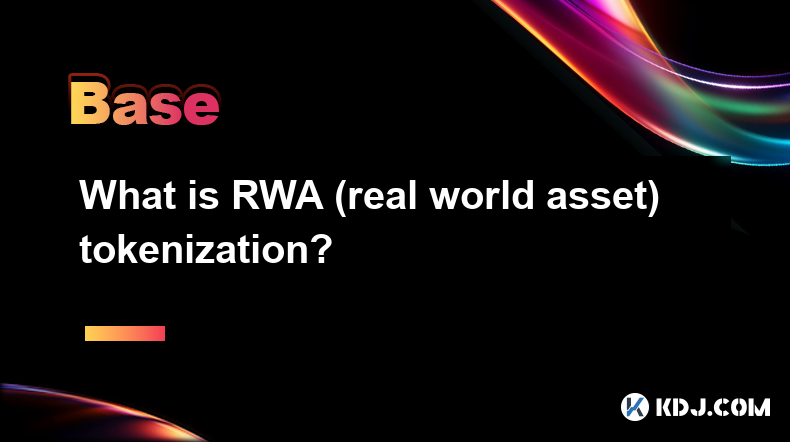
What is RWA (Real World Asset) Tokenization?
RWA (Real World Asset) tokenization refers to the process of converting tangible or intangible real-world assets into digital tokens on a blockchain. This innovative approach allows for the representation, ownership, and transfer of assets such as real estate, art, commodities, and intellectual property through digital means. By tokenizing these assets, they can be divided into smaller units, making them more accessible and tradable on blockchain platforms.
The Concept of Tokenization
Tokenization involves creating a digital representation of an asset on a blockchain. This digital token can represent ownership or a share in the underlying asset. The primary benefit of tokenization is the increased liquidity and accessibility it provides. Assets that were previously difficult to divide and trade can now be split into smaller, more manageable units, allowing a broader range of investors to participate.
Types of Real World Assets That Can Be Tokenized
A variety of assets can be tokenized, including but not limited to:
- Real Estate: Properties can be tokenized to allow fractional ownership, making real estate investment more accessible to smaller investors.
- Art and Collectibles: Valuable artworks and collectibles can be tokenized, enabling investors to own a piece of high-value items.
- Commodities: Physical commodities like gold and oil can be represented as tokens, facilitating easier trading and storage.
- Intellectual Property: Rights to music, patents, and other forms of intellectual property can be tokenized, allowing for more flexible ownership and revenue sharing.
Benefits of RWA Tokenization
Tokenizing real-world assets offers several advantages:
- Increased Liquidity: By breaking down assets into smaller units, tokenization allows for easier buying and selling, increasing market liquidity.
- Accessibility: Fractional ownership means that even those with limited capital can invest in high-value assets.
- Transparency and Security: Blockchain technology ensures that all transactions are recorded on a public ledger, reducing the risk of fraud and increasing trust among participants.
- Efficiency: Tokenization can streamline processes such as asset transfer and management, reducing costs and time.
The Process of Tokenizing Real World Assets
Tokenizing a real-world asset involves several steps:
- Asset Selection: Choose the asset you want to tokenize. This could be anything from a piece of real estate to a piece of art.
- Legal and Regulatory Compliance: Ensure that the tokenization complies with all relevant laws and regulations. This may involve working with legal experts to navigate the complexities of asset tokenization.
- Token Creation: Develop the token on a suitable blockchain platform. This involves defining the token's properties, such as its total supply and divisibility.
- Asset Verification: Verify the ownership and authenticity of the asset. This step is crucial to ensure that the token accurately represents the underlying asset.
- Token Distribution: Distribute the tokens to investors or buyers. This can be done through an Initial Token Offering (ITO) or other distribution methods.
- Management and Trading: Once the tokens are distributed, they can be managed and traded on blockchain platforms, allowing for ongoing liquidity and investment opportunities.
Challenges and Considerations in RWA Tokenization
While RWA tokenization offers numerous benefits, there are also challenges and considerations to keep in mind:
- Regulatory Uncertainty: The regulatory environment for tokenized assets can be complex and varies by jurisdiction. Navigating these regulations requires careful planning and legal expertise.
- Technical Complexity: Creating and managing tokens on a blockchain requires technical knowledge and infrastructure. Ensuring the security and integrity of the tokenized assets is paramount.
- Market Acceptance: For tokenized assets to be successful, they need to be accepted by the market. This involves building trust and demonstrating the value of tokenization to potential investors.
- Valuation and Pricing: Determining the value of tokenized assets can be challenging, especially for unique or illiquid assets. Accurate valuation is essential for fair trading and investment.
Examples of RWA Tokenization
Several projects have successfully tokenized real-world assets, providing practical examples of how this technology can be applied:
- RealT: RealT allows users to buy and sell tokenized real estate properties. Investors can own fractions of properties and receive rental income in the form of cryptocurrency.
- Maecenas: Maecenas enables the tokenization of high-value artworks, allowing investors to buy shares in pieces of art and potentially benefit from their appreciation in value.
- Harbor: Harbor provides a platform for tokenizing various assets, including real estate and private equity. It helps issuers comply with regulations and manage their tokenized assets.
Frequently Asked Questions
Q: How does RWA tokenization affect traditional asset management?
A: RWA tokenization can significantly impact traditional asset management by increasing liquidity and accessibility. It allows for more efficient management and trading of assets, potentially reducing costs and increasing returns for investors. However, it also requires traditional asset managers to adapt to new technologies and regulatory frameworks.
Q: Can anyone tokenize an asset, or are there specific requirements?
A: Not everyone can tokenize an asset. There are specific requirements, including legal and regulatory compliance, that must be met. Additionally, the process requires technical expertise and infrastructure to create and manage tokens on a blockchain.
Q: How do taxes work with tokenized real-world assets?
A: The taxation of tokenized real-world assets can be complex and depends on the jurisdiction. Generally, any gains from the sale of tokenized assets may be subject to capital gains tax. Additionally, income generated from tokenized assets, such as rental income from tokenized real estate, may be taxed as regular income. It's important to consult with a tax professional to understand the specific tax implications.
Q: What are the risks associated with investing in tokenized assets?
A: Investing in tokenized assets comes with several risks, including market risk, regulatory risk, and technological risk. Market risk involves the potential for the value of the asset to fluctuate. Regulatory risk arises from the uncertainty and potential changes in laws governing tokenized assets. Technological risk includes the possibility of security breaches or technical failures in the blockchain platform used for tokenization.
Disclaimer:info@kdj.com
The information provided is not trading advice. kdj.com does not assume any responsibility for any investments made based on the information provided in this article. Cryptocurrencies are highly volatile and it is highly recommended that you invest with caution after thorough research!
If you believe that the content used on this website infringes your copyright, please contact us immediately (info@kdj.com) and we will delete it promptly.
- 2025-W Uncirculated American Gold Eagle and Dr. Vera Rubin Quarter Mark New Products
- 2025-06-13 06:25:13
- Ruvi AI (RVU) Leverages Blockchain and Artificial Intelligence to Disrupt Marketing, Entertainment, and Finance
- 2025-06-13 07:05:12
- H100 Group AB Raises 101 Million SEK (Approximately $10.6 Million) to Bolster Bitcoin Reserves
- 2025-06-13 06:25:13
- Galaxy Digital CEO Mike Novogratz Says Bitcoin Will Replace Gold and Go to $1,000,000
- 2025-06-13 06:45:13
- Trust Wallet Token (TWT) Price Drops 5.7% as RWA Integration Plans Ignite Excitement
- 2025-06-13 06:45:13
- Ethereum (ETH) Is in the Second Phase of a Three-Stage Market Cycle
- 2025-06-13 07:25:13
Related knowledge
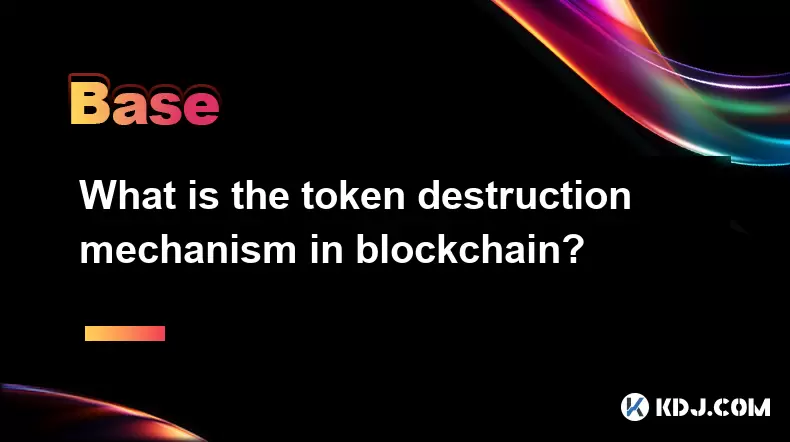
What is the token destruction mechanism in blockchain?
Jun 15,2025 at 12:14pm
Understanding Token Destruction in BlockchainToken destruction, often referred to as token burning, is a mechanism used within blockchain ecosystems to permanently remove a certain number of tokens from circulation. This process typically involves sending tokens to an irretrievable wallet address — commonly known as a burn address or eater address — whi...
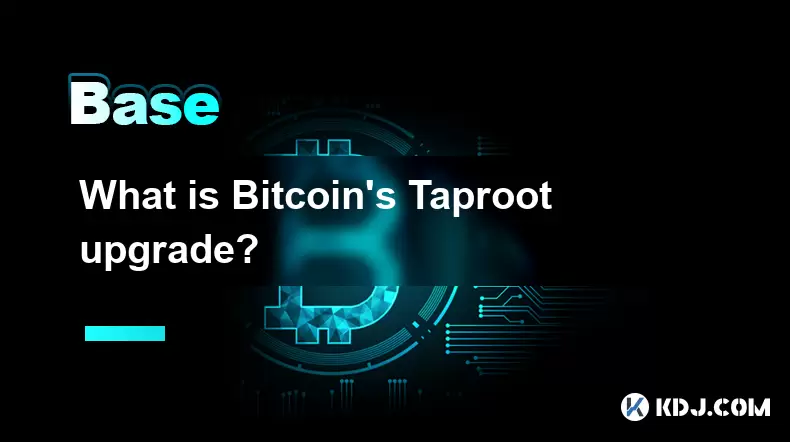
What is Bitcoin's Taproot upgrade?
Jun 14,2025 at 06:21am
Understanding the Basics of Bitcoin's Taproot UpgradeBitcoin's Taproot upgrade is a significant soft fork improvement introduced to enhance privacy, scalability, and smart contract functionality on the Bitcoin network. Activated in November 2021, Taproot represents one of the most notable upgrades since SegWit (Segregated Witness) in 2017. At its core, ...
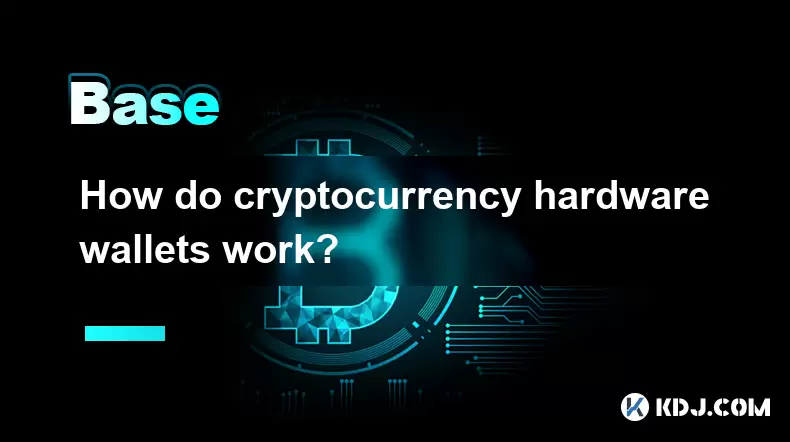
How do cryptocurrency hardware wallets work?
Jun 14,2025 at 11:28am
Understanding the Basics of Cryptocurrency Hardware WalletsCryptocurrency hardware wallets are physical devices designed to securely store users' private keys offline, offering a high level of protection against online threats. Unlike software wallets that remain connected to the internet, hardware wallets keep private keys isolated from potentially com...
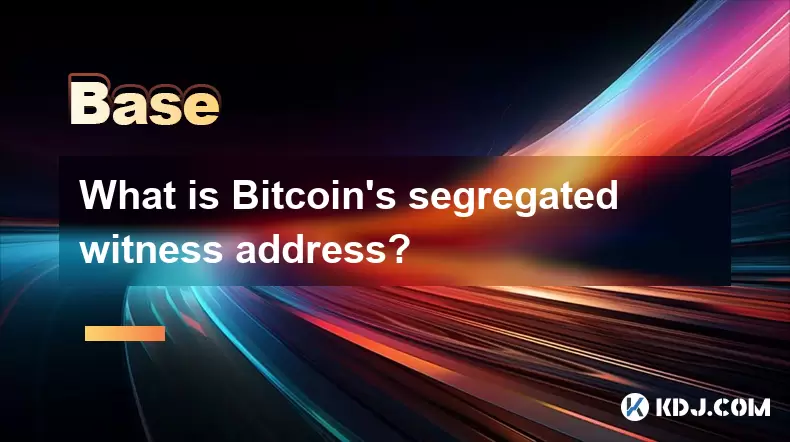
What is Bitcoin's segregated witness address?
Jun 16,2025 at 04:14pm
Understanding the Concept of Segregated Witness (SegWit)Bitcoin's Segregated Witness (SegWit) is a protocol upgrade implemented in 2017 to improve the scalability and efficiency of Bitcoin transactions. SegWit addresses were introduced as part of this upgrade, designed to separate (or 'segregate') signature data from transaction data. This separation al...
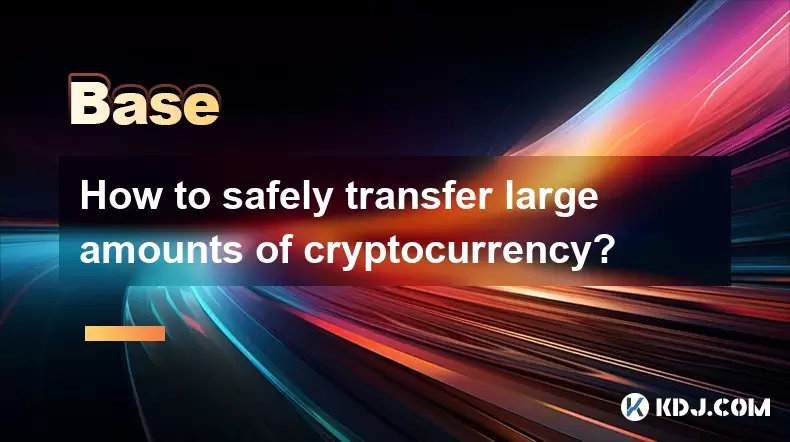
How to safely transfer large amounts of cryptocurrency?
Jun 17,2025 at 03:35pm
Understanding the Risks Involved in Transferring Large AmountsTransferring large amounts of cryptocurrency involves a unique set of risks that differ from regular transactions. The most critical risk is exposure to theft via compromised private keys or phishing attacks. Additionally, network congestion can lead to delayed confirmations, and incorrect wa...
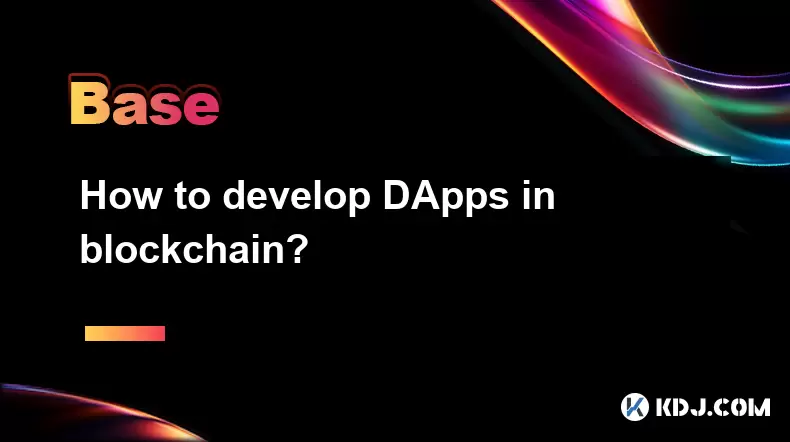
How to develop DApps in blockchain?
Jun 14,2025 at 10:01pm
Understanding the Basics of DApp DevelopmentDeveloping decentralized applications (DApps) in blockchain involves creating software that runs on a peer-to-peer network rather than relying on centralized servers. A DApp must be open-source, operate autonomously, and have tokens or digital assets as part of its functionality. Unlike traditional apps, DApps...

What is the token destruction mechanism in blockchain?
Jun 15,2025 at 12:14pm
Understanding Token Destruction in BlockchainToken destruction, often referred to as token burning, is a mechanism used within blockchain ecosystems to permanently remove a certain number of tokens from circulation. This process typically involves sending tokens to an irretrievable wallet address — commonly known as a burn address or eater address — whi...

What is Bitcoin's Taproot upgrade?
Jun 14,2025 at 06:21am
Understanding the Basics of Bitcoin's Taproot UpgradeBitcoin's Taproot upgrade is a significant soft fork improvement introduced to enhance privacy, scalability, and smart contract functionality on the Bitcoin network. Activated in November 2021, Taproot represents one of the most notable upgrades since SegWit (Segregated Witness) in 2017. At its core, ...

How do cryptocurrency hardware wallets work?
Jun 14,2025 at 11:28am
Understanding the Basics of Cryptocurrency Hardware WalletsCryptocurrency hardware wallets are physical devices designed to securely store users' private keys offline, offering a high level of protection against online threats. Unlike software wallets that remain connected to the internet, hardware wallets keep private keys isolated from potentially com...

What is Bitcoin's segregated witness address?
Jun 16,2025 at 04:14pm
Understanding the Concept of Segregated Witness (SegWit)Bitcoin's Segregated Witness (SegWit) is a protocol upgrade implemented in 2017 to improve the scalability and efficiency of Bitcoin transactions. SegWit addresses were introduced as part of this upgrade, designed to separate (or 'segregate') signature data from transaction data. This separation al...

How to safely transfer large amounts of cryptocurrency?
Jun 17,2025 at 03:35pm
Understanding the Risks Involved in Transferring Large AmountsTransferring large amounts of cryptocurrency involves a unique set of risks that differ from regular transactions. The most critical risk is exposure to theft via compromised private keys or phishing attacks. Additionally, network congestion can lead to delayed confirmations, and incorrect wa...

How to develop DApps in blockchain?
Jun 14,2025 at 10:01pm
Understanding the Basics of DApp DevelopmentDeveloping decentralized applications (DApps) in blockchain involves creating software that runs on a peer-to-peer network rather than relying on centralized servers. A DApp must be open-source, operate autonomously, and have tokens or digital assets as part of its functionality. Unlike traditional apps, DApps...
See all articles

























































































